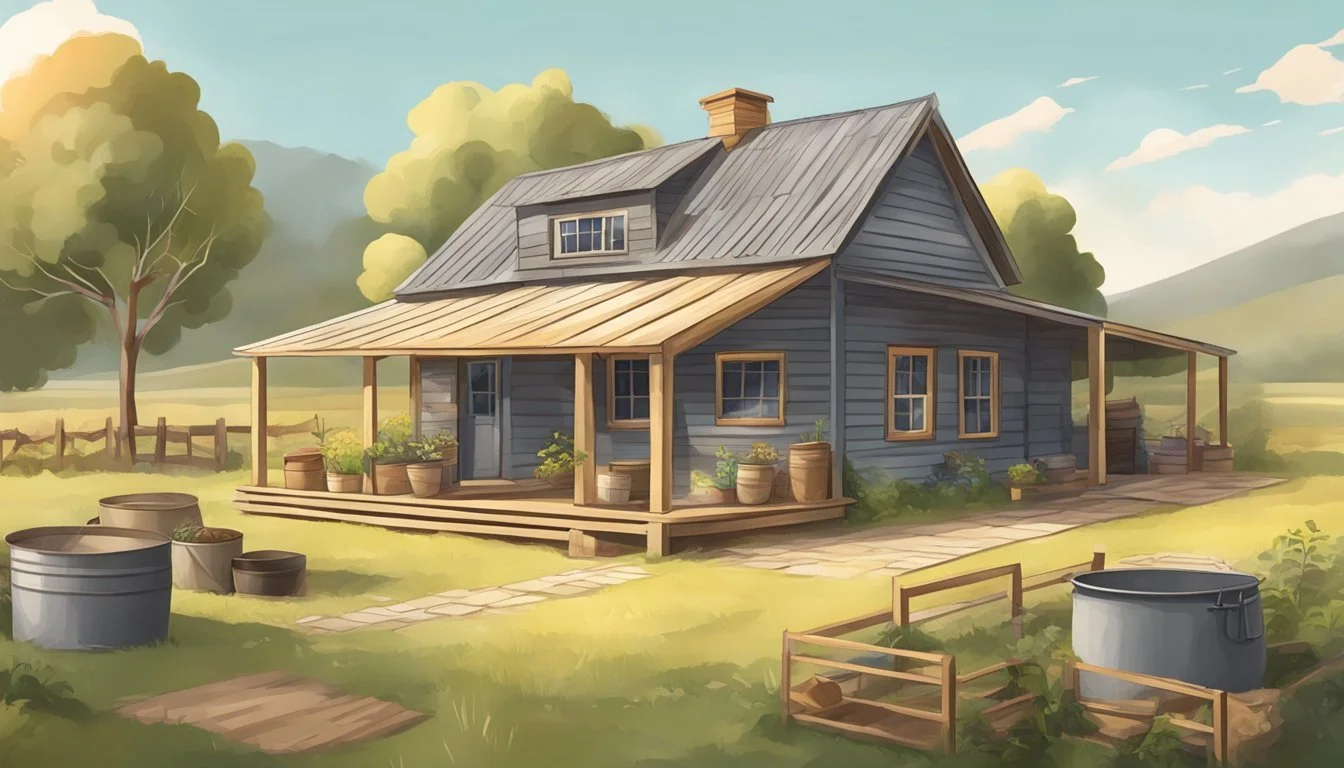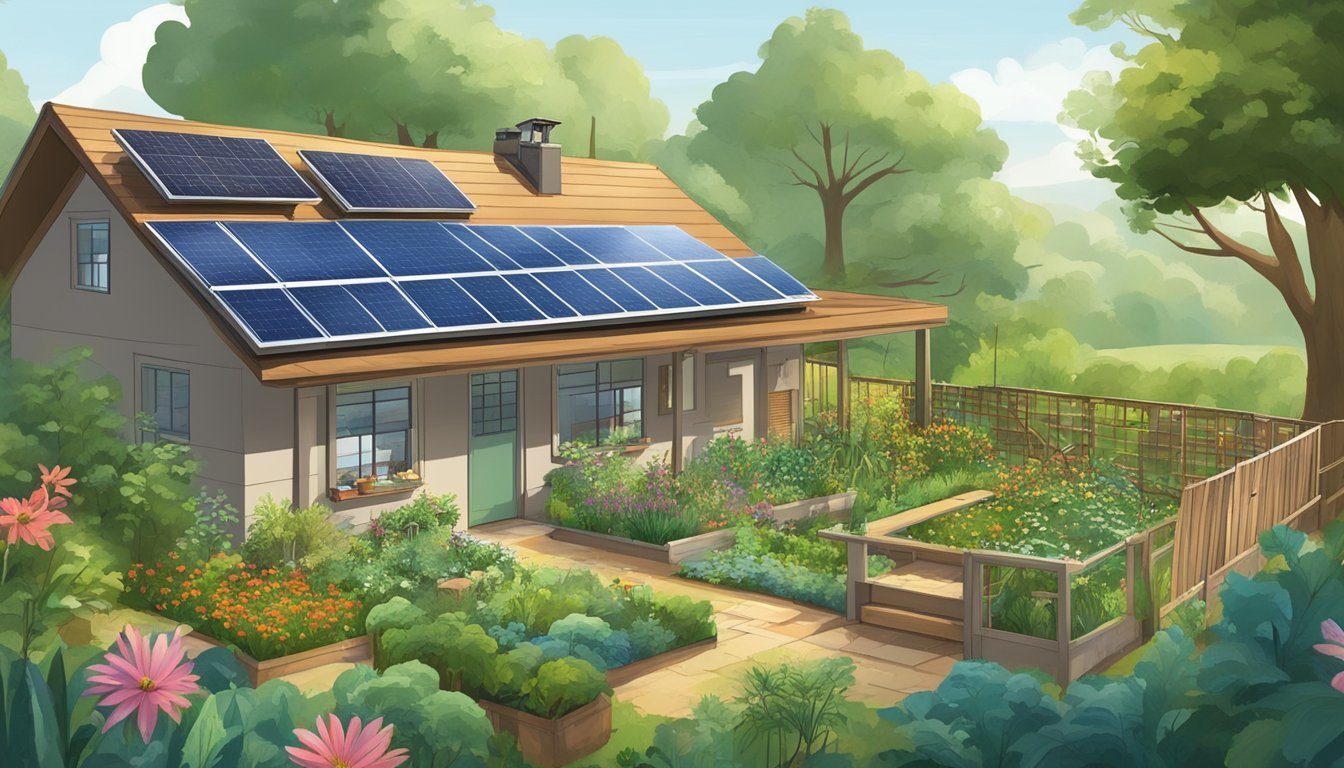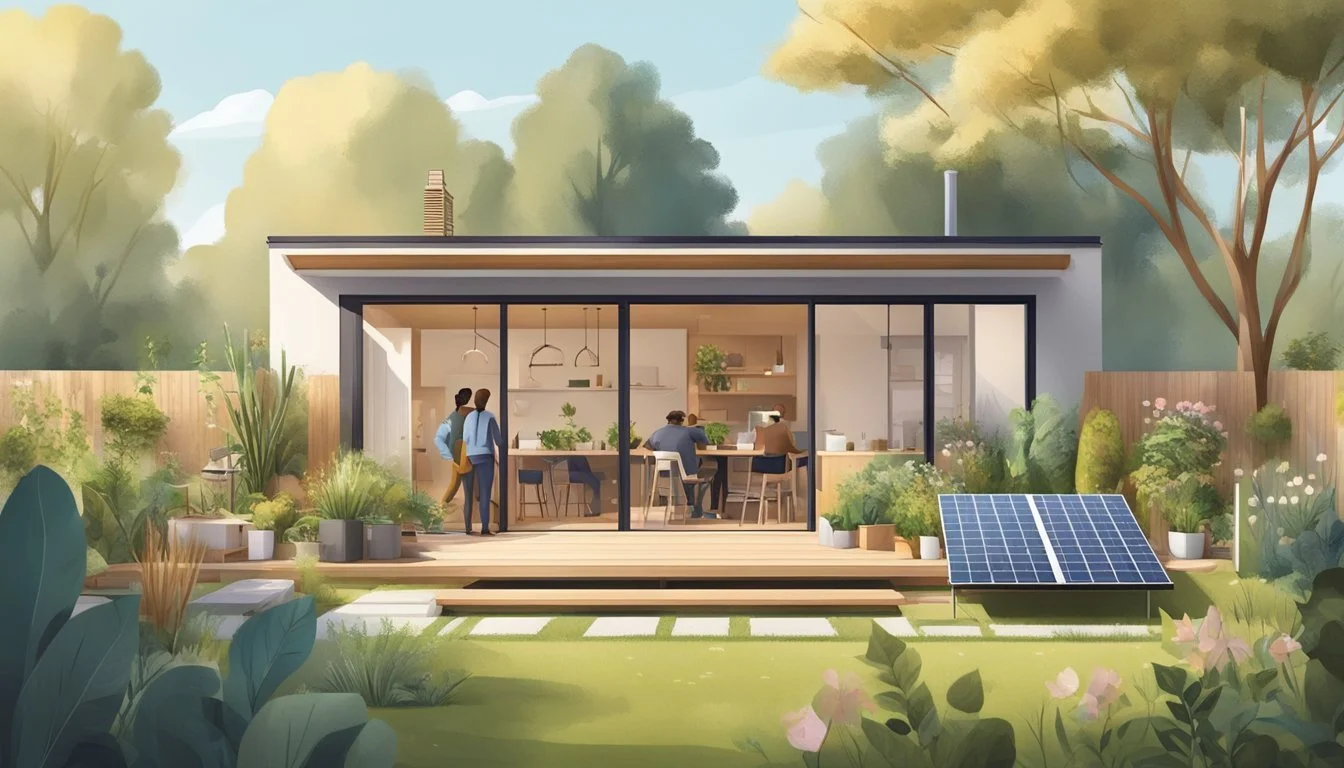The Intersection of Homesteading and Minimalism
Embracing Simple Self-Sufficiency
Homesteading and minimalism may seem like contrasting lifestyles at first glance. Homesteading often involves self-sufficiency practices that include growing your own food, raising livestock, and preserving goods, which can require a collection of tools and equipment. Minimalism, on the other hand, advocates for living with fewer possessions, focusing on simplicity, and clearing life's excess. Yet, when the principles of minimalism are applied to homesteading, they can intersect in a complementary way, leading to a lifestyle that emphasizes quality over quantity and intentional living.
The fusion of homesteading and minimalism focuses on sustainability and the mindful use of resources. Homesteaders can adopt minimalist practices by carefully considering the tools and items they bring onto their property, ensuring that each serves a purpose or brings value. By adopting a minimalist approach, homesteaders can create systems that rely on themselves and lessen their environmental impact. This lifestyle also involves a mental shift to finding contentment in what one has, simplifying daily routines, and reducing the clutter that can otherwise hinder the efficiency and enjoyment of homesteading activities.
When minimalism meets homesteading, it promotes an economically savvy and ecologically friendly way of life. Minimalist homesteading champions the idea of using and reusing what one has, limiting waste, and being resourceful within one's means. This combination presents an integrated approach to living that might lead to not only a smaller carbon footprint but also a greater appreciation for the simple joys of self-reliance and the beauty of less is more.
Fundamentals of Homesteading and Minimalism
The concepts of homesteading and minimalism may appear distinct, yet they share a common essence in their pursuit of a sustainable and intentional lifestyle. These practices emphasize self-sufficiency and mindful living, challenging the modern consumerist culture.
Understanding Homesteading
Homesteading traditionally refers to living a self-sufficient life by cultivating one's own food, and possibly raising livestock. Modern homesteading has adapted to various environments, from rural acres to urban balconies. The homesteader's goal is to reduce reliance on outside sources for food, energy, and other necessities, striving for a sustainable way of life.
Key aspects:
Resourcefulness: Utilizing and maximizing local resources efficiently.
Skills: Learning and practicing traditional skills such as gardening, canning, and carpentry.
Sustainability: Emphasizing eco-friendly practices to reduce environmental impact.
Embracing Minimalism
Minimalism as a lifestyle choice focuses on reducing excess and living with only what one considers essential. For a minimalist, the value of possessions is measured by their purpose and contribution to well-being, rather than their quantity. This simplicity fosters a clearer mind and often leads to a more organized and productive environment.
Principles:
Decluttering: Removing unnecessary items to focus on what's important.
Intentionality: Making conscious and deliberate decisions in everyday life.
Contentment: Finding satisfaction in fewer, meaningful possessions.
Integrating Homesteading and Minimalism
Merging homesteading and minimalism presents a compelling synergy that can enhance personal self-sufficiency while being conscious of consumption. Integrating these principles involves adopting practices that both reduce waste and promote a sustainable cycle of living.
Integration Strategies:
Streamlined Gardening: Growing only what is needed and will be consumed, avoiding overproduction.
Multipurpose Tools: Investing in quality tools that serve multiple functions, decreasing clutter and promoting efficiency.
Mindful Consumerism: Acquiring goods that support homesteading activities while adhering to minimalist values.
By infusing the essence of minimalism into the homesteading ethos, individuals craft a lifestyle that is not only economically viable and ecologically responsible but also psychologically rewarding, showcasing the true potential of a harmonized life.
Starting a Minimalist Homestead
Creating a minimalist homestead requires careful consideration of land size, a detailed plan, and a willingness to start small. The focus is on practicality and effectiveness to ensure sustainable living and self-sufficiency.
Choosing the Right Size Land
The size of the land one selects for a minimalist homestead is pivotal. It should be large enough to support self-sustained living but small enough to manage with minimal effort and resources. Practical size varies, but often, a few acres are sufficient to provide for a family's needs without becoming overwhelming.
Planning Your Minimalist Homestead
A highly detailed plan for one’s homestead will pave the way for an effective minimalist lifestyle. The plan should include which crops to grow, what livestock to raise, and how to design structures with efficiency in mind. Resizing the garden to fit one's skill level is an example of strategic planning that aligns with minimalist principles.
Starting Small and Scaling Up
One should start with a small number of projects and gradually scale up over time, ensuring they can manage each new addition effectively. This approach allows homesteaders to learn as they go and avoid becoming overwhelmed. Starting with basic beekeeping or a small chicken coop can serve as a simple yet productive beginning.
Growing Your Own Food
Embracing the practices of growing one's own food aligns both with homesteading principles and the minimalist ethos, focusing on sustainability, reducing waste, and living with purpose.
Gardening and Planting Crops
Starting a garden is one of the most direct ways to produce food while practicing minimalism. They can select seeds carefully to include high-yield and easy-to-grow options like tomatoes and perennials that provide food year after year. Utilizing companion planting principles, they can maximize space and reduce the need for chemical pesticides, fostering a more holistic approach.
Tomatoes: Grow in well-draining soil; require staking or cages
Leafy Greens: Ideal for cooler, shaded areas
Root Vegetables: Require deep, loose soil for optimal growth
Berries: Perennial plants that can produce fruit for years after the first planting
Raising Livestock Sustainably
By choosing to raise livestock, they are committing to a hands-on approach to food that prioritizes animal welfare and environmental health. Chickens offer a dual purpose by providing both eggs and meat, while goats can offer milk, cheese, and yogurt. With careful planning, they can ensure that their livestock needs are met responsibly.
Chickens: Need secure coops; provide eggs and meat
Goats: Require grazing areas; provide milk for dairy products
Foraging and Preserving Food
Foraging for wild edibles like berries adds variety to their pantry and connects them further to their environment. Responsible foraging involves taking only what is needed and understanding the local ecosystem. Preserving the harvested food through methods like canning and drying ensures a steady supply of provisions throughout the year.
Berries: Identify safe and abundant species to forage
Canning: Preserve fruit and vegetables for year-round consumption
Building and Living in a Tiny House
Tiny houses embody the essence of homesteading and minimalism, providing a sustainable lifestyle with reduced environmental impact. They can maximize space while embracing a philosophy of living with less.
Designing a Tiny House for Homesteading
In designing a tiny house for homesteading, space optimization is key. Every square inch counts, from the raised garden beds to the storage of tools. Homesteaders often need to balance the space for living and the space for self-sufficiency activities.
Kitchen: Compact and multifunctional appliances to conserve space.
Storage: Built-ins and multipurpose furniture that can double as storage units.
Sleeping area: Lofted beds to increase living area footprint.
Outdoor connections: Decks or fold-out spaces to marry indoor-outdoor living.
Additionally, sustainability features like solar panels and rainwater harvesting systems are integral to a homesteader's tiny house design, tying the home to its environment and reducing dependence on outside resources.
Incorporating Minimalism into Tiny House Living
Minimalism in a tiny house is not just a design aesthetic; it's a lifestyle choice that involves decluttering and prioritizing possessions that add value to life. Here are some components crucial to minimalism in tiny house living:
Decluttering: Regular decluttering sessions are essential to prevent accumulation of unnecessary items. It's important to only keep items that are multipurpose or bring significant value to the tiny house lifestyle.
Composting toilet: An eco-friendly alternative to traditional plumbing, a composting toilet reduces water usage and complements the minimalist and sustainable ethos by turning waste into compost for the garden.
By adopting these strategies, occupants of tiny houses embrace a lifestyle focused on essentials, proving that living small does not mean sacrificing comfort or functionality but rather enhancing life with simplicity and purpose.
Homestead Infrastructure and Tools
Infrastructure and tools are foundational to the intersection of homesteading and minimalism, as they determine the efficiency and sustainability of the operation. Careful selection of resilient water systems, energy solutions, and tools that serve multiple purposes can greatly reduce waste and environmental impact.
Water Management Systems
Water is a critical resource on any homestead, and efficient water management systems are essential. Rainwater harvesting is often employed to collect and store water for both irrigation and household use. Components typically include gutters, downspouts, and storage tanks. On a minimalist homestead, one may also construct a greywater system for recycling used water from sinks, showers, and washing machines, often for irrigation purposes. A well-organized system can integrate with a chicken coop to provide water for poultry while conserving this vital resource.
Energy Solutions for Homesteads
For energy, solar panels play a pivotal role by providing a renewable energy source capable of powering everything from lights in a barn to small appliances. Battery storage systems can store excess energy for use during overcast days or nighttime. Devices like a Kill-a-watt meter can be used to track energy consumption, aiding homesteaders in minimizing their energy usage by identifying and eliminating wasteful practices.
Choosing Tools and Equipment
Selecting the right tools and equipment is crucial for the minimalistic homesteader. Each tool must serve multiple purposes, withstand heavy use, and improve the effectiveness of the homestead's operation. A durable hammer is indispensable for building and repairing structures, such as a chicken coop or barn. Similarly, a set of pliers is a versatile tool for repairs and maintenance tasks. Quality over quantity defines the minimalist's toolkit, ensuring that each item is of high utility and longevity.
Sustainable Practices and Permaculture
In the union of homesteading and minimalism, sustainable practices and permaculture stand out as essential strategies. They foster resilience through methods that regenerate the environment, emphasizing the importance of nurturing soil and ecosystems.
Composting and Soil Enrichment
Composting is a fundamental aspect of permaculture, converting organic waste into nutrient-rich soil beneficial for plant growth. Effective composting involves a balance of carbon and nitrogen materials, which enriches the soil and improves its structure. This process not only recycles kitchen and garden waste but also reduces landfill contribution.
Carbon-rich materials (browns): Dry leaves, straw, paper
Nitrogen-rich materials (greens): Grass clippings, fruit and vegetable scraps, coffee grounds
Introducing Bees and Pollinators
Bees play a crucial role in permaculture systems. By introducing bees, a homestead ensures pollination which is vital for the production of fruits and vegetables. These pollinators assist in biodiversity, contributing to a robust ecosystem. To attract and sustain them, planting native flowers and creating habitats like bee hotels is recommended.
Native plants for bees:
Aster
Bee balm
Lavender
Eco-Friendly Waste Management
Permaculture homesteads strive for eco-friendly waste management, where waste is seen as a resource. They often implement systems that minimize waste output through reuse and recycling. For example, water harvesting systems collect rainwater for irrigation, while greywater from sinks and showers can be reused for non-potable purposes, underlining a commitment to sustainability.
Water harvesting techniques:
Rain barrels
Swales
Rain gardens
Economic Aspects of Homesteading
Homesteading can impact one's finances in various ways, from the initial setup costs to the potential for generating income. Effective financial management is key for a homestead to thrive economically.
Assessing Costs and Managing Expenses
When starting a homestead, assessing costs is crucial. Initial investments may include land purchase, building materials for shelter, and tools for working the land. Homesteaders need to manage expenses carefully, considering not just the setup costs but also the recurring expenses such as seeds, feed for animals, and maintenance of equipment. By adhering to a strict budget and minimizing unnecessary expenditures, homesteaders can exercise financial prudence to avoid debt.
Initial Costs: Land, housing, tools.
Recurring Costs: Seeds, feed, equipment maintenance.
Financial Management: Budgeting, reducing debts.
Homesteading and the Market
The role of homesteading in the market spans from selling excess produce to participating in local farmers' markets. Homesteaders can contribute to their income by selling goods such as fresh produce, eggs, or handcrafted items, potentially affecting the market dynamics. They need to stay informed about market trends to price their products competitively. Additionally, homesteaders who focus on niche markets or organic produce may attract customers willing to pay a premium, improving their sales.
Income Generation: Produce sales, farmers' markets, crafts.
Market Trends: Competitive pricing, supply and demand.
Product Niches: Organic produce, artisan goods.
Understanding these economic aspects helps homesteaders navigate financial waters, whether they're looking to break even, reduce expenditures, or turn a profit.
Homestead Management and Organization
Managing a homestead efficiently calls for a well-structured management plan and an effective organizational system. Attention to detail and regular maintenance are crucial for a successful integration of homesteading with minimalistic living.
Daily Routines and Time Management
A day in the life of a homesteader should begin with a clear set of priorities and a schedule. For those raising chickens, this means promptly collecting eggs each morning to ensure freshness and minimize breakage. Similarly, livestock feeding happens on a strict timetable to maintain their health and productivity, whether it's goats or cows. An established routine not only ensures the well-being of animals but also allows for an efficient division of one's day.
Morning: Feed animals, collect eggs, water plants
Afternoon: Inspect and manage crops, continue building or repairs
Evening: Prepare animal shelters for night, plan next day's tasks
Maintenance and Upkeep of the Homestead
Consistent maintenance is the backbone of homestead longevity, particularly for areas in direct contact with animals. Regular cleaning of livestock pens and chicken coops prevents disease and promotes a healthy living environment. Keeping equipment used for producing meat or harvesting eggs in prime condition is also a minimalist approach to avoid unnecessary clutter and expense on replacements.
Weekly Tasks:
Inspect fences and gates for security
Clean animal living areas
Monthly Tasks:
Check the integrity of all tools and structures
Deep clean essential equipment
Minimalist Living and Possession Reduction
In the context of homemaking, minimalism emphasizes possession reduction and a focus on essentials. This philosophy assists in the creation of a clutter-free living space and lifestyle.
Decluttering and Keeping What's Necessary
Decluttering is the primary step towards a minimalist lifestyle. Homesteaders often find themselves surrounded by tools and equipment necessary for maintaining their lifestyle—from gardening implements like rototillers to kitchen gadgets for processing harvests. However, the fundamental principle of minimalism suggests keeping only what is essential. For example, a homesteader might choose to have one high-quality multi-purpose tool instead of several single-use items. Through careful consideration of each possession's utility, homesteaders can streamline their processes and reduce their carbon footprint.
Practical tips: Start with areas that are prone to clutter. Assess each item based on frequency of use and purpose.
Decision criteria: If an item hasn't been used in a year or duplicates the function of another, consider rehoming it.
Outcome: A more organized space that saves time and reduces stress.
Balancing Homesteading with Minimalistic Ideals
Homesteading entails various projects that typically require a range of tools and equipment. Balancing this need with minimalistic ideals involves selecting possessions that serve multiple purposes or can be easily stored to maximize space efficiency. Homesteaders can also focus on sustainable practices that align with minimalism, such as growing their own food to reduce waste and consumption.
Equipment choice: Opt for items that have multiple uses or can be easily repaired.
Space utilization: Designate areas for specific activities and ensure that everything has its place, using vertical space when possible.
Sustainability: Choose renewable resources and methods that complement a minimalist approach.
By mindfully evaluating each item's role in the home and garden, homesteaders can integrate minimalistic principles into their daily lives, enhancing their self-sufficiency while adhering to a sustainable ethos.
Community Involvement and Social Aspects
The convergence of homesteading and minimalism nourishes community involvement through shared experiences and stimulates local economies via market participation. These lifestyles promote learning from one another and reinforce local, self-reliant living.
Sharing Experiences and Knowledge
Within the homesteading community, the exchange of knowledge is a crucial element. Members often organize or participate in local workshops and gatherings. These events serve as incubators for ideas, where individuals share practical skills such as gardening, canning, carpentry, and animal husbandry. Novices benefit from veterans' wisdom, creating a supportive web of self-reliance bolstered by collective experiences.
Workshops Offered: Gardening, Canning, Carpentry, Animal Husbandry
Community Benefits: Skill Development, Supportive Networks, Sustainability Practices
Market Participation and Local Sales
Minimalism and homesteading intersect significantly in their impact on local markets. Homesteaders often bring their surplus produce, handmade goods, and artisanal products to local farmers' markets, fostering an ecosystem of local sales. Buyers know they are supporting neighbors and assuring quality, reinforcing the local economy and building community.
Local Offerings: Fresh Produce, Handmade Goods, Artisanal Products
Economic Impact: Supports Local Producers, Encourages Circulation of Local Currency
Conclusion
The intersection of homesteading and minimalism has emerged as a lifestyle focused on sustainability and self-sufficiency. This blend leverages the strengths of both practices to craft a deliberate way of living that emphasizes simplicity and harmony with the environment.
Summarizing the Homesteading Minimalism Lifestyle
The Homesteading Minimalism Lifestyle integrates the self-sustaining aspects of homesteading with the clutter-free principles of minimalism. Individuals who adopt this lifestyle engage in activities like organic gardening and renewable energy use, aiming to reduce their ecological footprint. By limiting possessions to the essential tools needed for tasks such as gardening or animal husbandry, they not only simplify their lives but also become more conscious of resource utilization.
Future of Homesteading and Minimalism
Looking ahead, the future of homesteading and minimalism appears promising as a path to a more sustainable world. The flexibility that modern homesteading offers means that even those with limited land can embrace elements of this lifestyle. It continues to adapt, incorporating new technologies that complement a minimalist ethos. As environmental awareness grows, so does the appeal of a lifestyle that is both self-sufficient and sustainable, affirming the relevance of this intersection for years to come.









